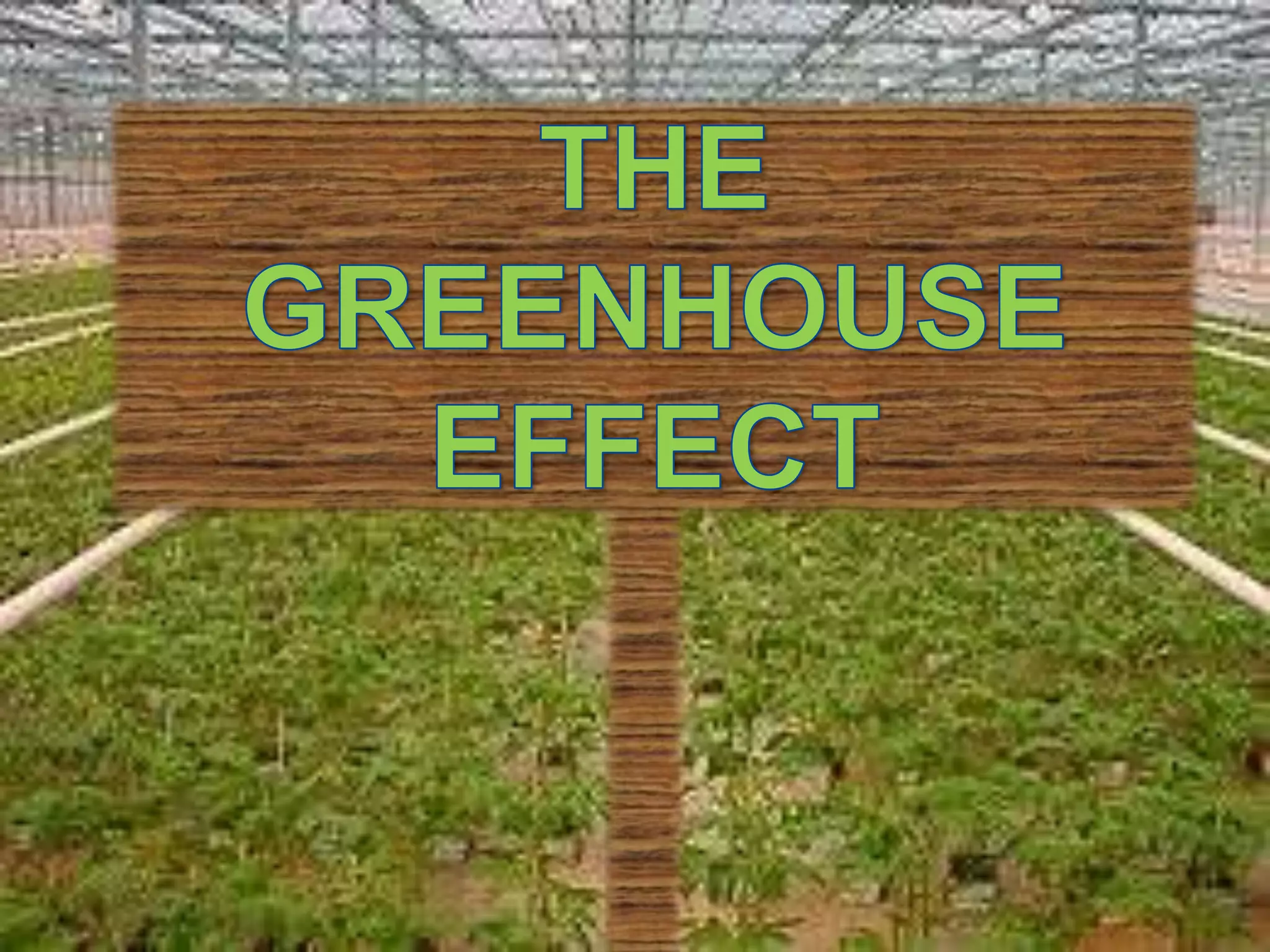The document discusses the greenhouse effect and thinning of the ozone layer. It explains that the greenhouse effect occurs when greenhouse gases like carbon dioxide trap heat in the atmosphere, causing global warming. The main causes are human activities that emit CO2 like burning fossil fuels. The thinning of the ozone layer is caused by chlorofluorocarbons which destroy ozone molecules. This allows more UV radiation to reach the Earth's surface, harming plants, animals and humans. The greenhouse effect and thinning ozone layer disrupt ecosystems and can lead to issues like rising sea levels, more extreme weather, and skin cancer.





















